Everything You Ever Needed to Know About Tomato Paste
This post may contain affiliate links. Read our disclosure policy here.
Want to make the most of that can of tomato paste in your pantry? Here’s how to store tomato paste, what to do with it, substitutes for tomato paste and more!
Are you tired of throwing away half-used cans of tomato paste because you didn’t know how to store it properly? Well, fear not! In this article, I’m going to cover everything you need to know about how to store tomato paste and what to do with it.
What is tomato paste?
Tomato paste is a thick, concentrated form of tomato puree made by cooking tomatoes for several hours, which removes most of the water content. The result is a rich, intensely flavored paste that’s perfect for adding depth and flavor to dishes.
Tomato paste is a staple ingredient in many cuisines and is often used in recipes for pasta sauces, stews, soups, and more. It’s incredibly versatile and can add a burst of umami flavor to any dish. So if you’re a fan of rich, tomato-y flavors, you’ll definitely want to have tomato paste on hand in your kitchen.
What is the difference between tomato paste and tomato sauce?
Tomato paste and tomato sauce are two commonly used tomato-based ingredients in cooking, but they are not the same thing.
A tomato paste is a concentrated tomato product that is made by cooking tomatoes for several hours, straining them to remove the seeds and skins, and then cooking the remaining tomato pulp until it thickens into a paste. Tomato sauce, on the other hand, is a thinner and more liquid sauce that is made by cooking tomatoes with other ingredients like herbs, onions, and garlic and then pureeing or blending the mixture.
While both tomato paste and tomato sauce are made from tomatoes, tomato paste is thicker, more concentrated, and has a stronger tomato flavor, making it a popular ingredient for adding depth to recipes.
Substitute Tomato Paste for Tomato Sauce
If you ever find yourself without tomato sauce for a recipe, don’t worry! You can easily substitute tomato paste for tomato sauce.
Keep in mind that tomato paste is much more concentrated than tomato sauce, so you’ll need to dilute it with liquid. For every 1 cup of tomato sauce, use 3 tablespoons of tomato paste and 1 cup of water. You can also add spices and seasonings to give it more flavor, depending on what you’re making. This is a handy trick to have up your sleeve when you’re in a pinch!
Homemade Tomato Paste Recipe
Making your own tomato paste is easy, although very time consuming.
Run your tomatoes through a sauce maker, food mill, or blender to puree them.
Strain out the seeds and any large pieces of skin through a fine sieve. Make sure the pulp goes into your stockpot though.
Choose a heavy-bottom stockpot or another large pot with a large wooden spoon. Pour your tomato puree in and cook over a low heat until it’s a very thick consistency. This will take quite some time and you will need to stir regularly so it doesn’t burn to the bottom.
How to Store Tomato Paste
Tomato paste adds concentrated tomato flavor to various dishes. However, after using a small amount of it, the remaining paste needs proper storage to maintain freshness and flavor. Let’s explore the best ways to store tomato paste, including tips for freezing, refrigerating, and canning, ensuring a fresh supply of tomato paste for your future recipes.
How to Freeze Tomato Paste
If you’re wondering how to freeze tomato paste, storing it in the freezer using ice cube trays is a great way to make sure you always have tomato paste on hand for recipes.
- Simply spoon the tomato paste into ice cube trays and freeze until solid.
- Once frozen, drop the tomato paste cubes from the tray and transfer them to a freezer-safe container or bag.
- Label the container or bag with the date and amount of tomato paste.
Tip: This method allows you to easily portion out the amount of tomato paste you need for a recipe, without having to thaw an entire can or jar. Plus, it takes up less space in the freezer than storing a can or jar of tomato paste.
Storing Tomato Paste in the Refrigerator
Storing tomato paste in the refrigerator is an easy and convenient way to keep it fresh for longer. Here’s how to store tomato paste in your fridge:
- Transfer the leftover tomato paste from the can to an airtight container, preferably a glass jar with a tight-fitting lid.
- Before storing it in the refrigerator, wipe the rim of the container to remove any excess paste that may have gotten on it.
- Place the container in the refrigerator, preferably in the coldest part, such as the back or bottom shelf.
Tip: If stored properly, tomato paste can last up to two weeks in the refrigerator. This way, you’ll have it on hand whenever you need it for your favorite recipes.
Canning Tomato Paste
If you’re looking to store tomato paste for longer than two weeks, you can consider canning it. Canning allows you to make the tomato paste shelf-stable, meaning it can be stored for a much longer period of time. Here’s how to can tomato paste:
- To can tomato paste, start by sterilizing your jars and lids.
- Add acid to your jars in the form of citric acid, vinegar, or lemon juice.
- Then, fill the jars with the tomato paste, leaving about ½ inch of headspace at the top.
- Wipe the rims clean and place the lids on.
- Process the jars in a boiling water bath for 15 minutes.
- Once the jars have cooled, you can store them in a cool, dark place for up to a year.
Want more help with canning? Give this a read: How to Can Tomato Juice.
Where Should You Buy Tomato Paste?
Tomato paste and any other canned tomato products are something that I always buy organic.
Natural Value is always a good price. You can by tomato paste single or by the case here.
Bionature is a good choice if you are looking to only buy glass jars and no tin cans. I really like their product which you can buy here.
Azure Standard now has their own tomato paste in their brand. It’s not as cheap in the single version as the Natural Value but the same price for the case if you like one over the other. You can buy it here.
Tomato Paste Recipes
Now that we’ve covered how to store and substitute tomato paste, let’s talk about some delicious recipes that use this pantry staple. Tomato paste is a great way to add depth of flavor to dishes, especially soups, stews, and sauces.
Homemade Ketchup with Fresh Tomatoes
This recipe for Homemade Ketchup with Fresh Tomatoes is a quick and easy way to make your own ketchup and save money on store-bought condiments. With just a few ingredients, you can create delicious and healthy ketchup without any mysterious “natural flavorings.” Here’s how:
- Chop up the tomatoes.
- Simmer them with the other ingredients.
- Blend until smooth and strain out any seeds.
Tip: This homemade ketchup can be stored in the refrigerator or canned for later use. Try it on burgers, fries, and other favorite foods!
Fresh Tomato BBQ Sauce
This recipe provides a step-by-step guide on how to make Fresh Tomato BBQ Sauce, which is a great way to use up fresh tomatoes and have BBQ sauce on hand all year round.
The recipe includes diced tomatoes, onion, garlic powder, salt, brown or raw sugar, and tomato paste. I recommend using a food strainer to remove seeds and create a smoother sauce. After simmering the sauce for about 30 minutes, it should be left to cool before packaging and freezing.
Overall, this is a helpful recipe for those who enjoy using BBQ sauce in various recipes and want to make their own homemade version with fresh ingredients.
Bean with Bacon Soup
This Bean with Bacon Soup recipe is a great option for a warm winter meal. It is easy to make and requires only a few ingredients, making it affordable as well. The recipe calls for navy beans soaked overnight, diced onion, butternut squash or carrots, chicken stock, minced garlic, tomato paste, and bacon.
To make this soup, simply combine the ingredients in a slow cooker and leave to cook for 6-8 hours until the beans are soft and cooked through. This recipe yields enough soup to serve six people and possibly provide leftovers for lunch the next day. It can be enjoyed with a dollop of sour cream on top and a side of corn muffin.
Overall, this Bean with Bacon Soup recipe is a delicious and hearty option for a winter meal.
Homemade Enchilada Sauce Recipe
Want to make homemade enchilada sauce that has better flavor than the canned version? I’ve got one for you! Enchilada sauce can be used for more than just enchiladas; it can also be the base for soups, chili, rice, and casseroles. My enchilada recipe calls for common ingredients such as garlic, flour, chili powder, chicken stock, tomato paste, cumin, oregano, and salt. Here’s how to make homemade enchilada sauce:
- Sauté garlic in olive oil.
- Add flour and chili powder.
- Slowly add chicken stock.
- Mix in the remaining ingredients and let it simmer.
Overall, this is a great option if you want to elevate your Mexican cuisine game by making your own enchilada sauce from scratch.
My Go-To Salsa Recipe (For Canning)
This recipe is for homemade salsa that can be canned for future use. For this salsa recipe, you’ll need tomatoes, onions, bell peppers, jalapenos, garlic, cumin, salt, cilantro, sugar, vinegar, lime juice, and tomato paste.
Tip: It is important to ensure the jars are properly sealed before storing with this salsa recipe.
This is an easy and delicious solution for any leftover tomato paste and can be adjusted to personal preferences.
Storing tomato paste is a breeze with the different options available – freezing, refrigerating, or canning. You can easily substitute tomato paste for tomato sauce, and it’s a fantastic way to add depth of flavor to your meals. By following the tips and trying out the delicious recipes I’ve shared, you can make the most out of your leftover tomato paste and cut down on food waste.
So, next time you’re cooking with tomato paste, give these storage and recipe ideas a try and see how easy it is to elevate your dishes!
What do you use tomato paste for? Do you have other tomato paste recipes? Share them below!
Found this post helpful? Be sure and share it with your friends on Facebook, Instagram, Pinterest, Twitter, and through Email using the sharing buttons below!

This post on How to Use Tomato Paste was originally published on Little House Living in August 2023.





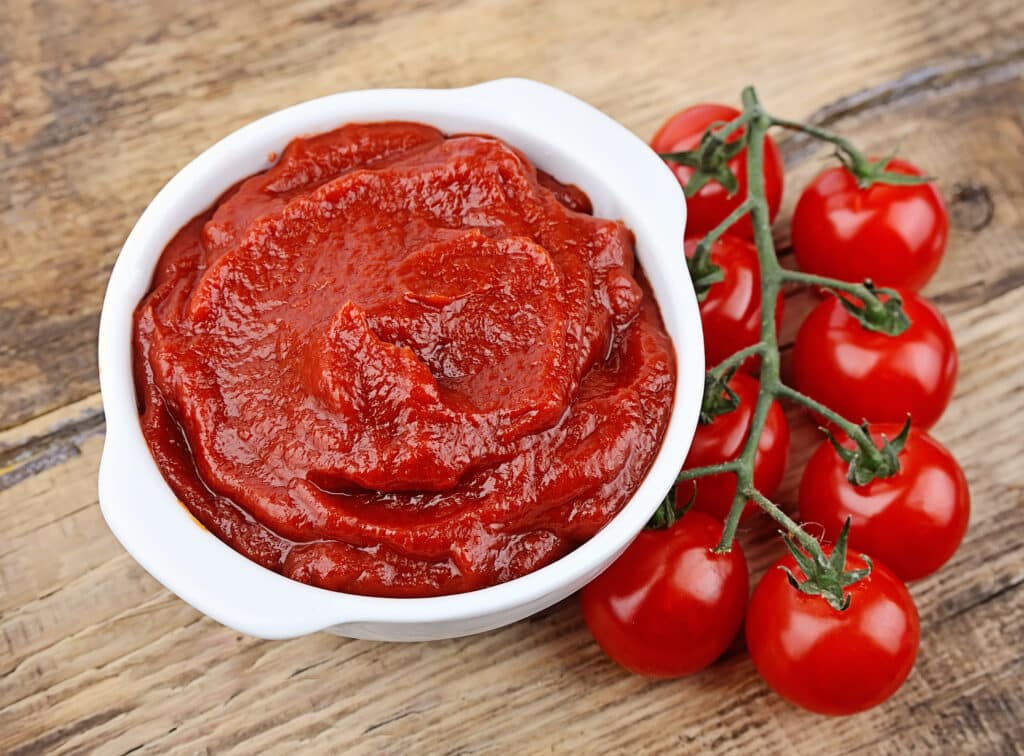
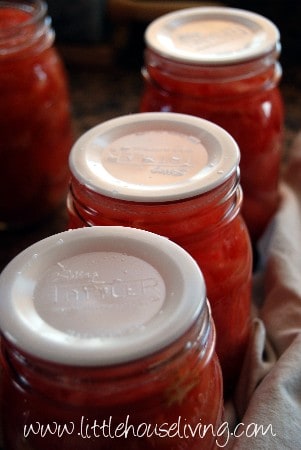



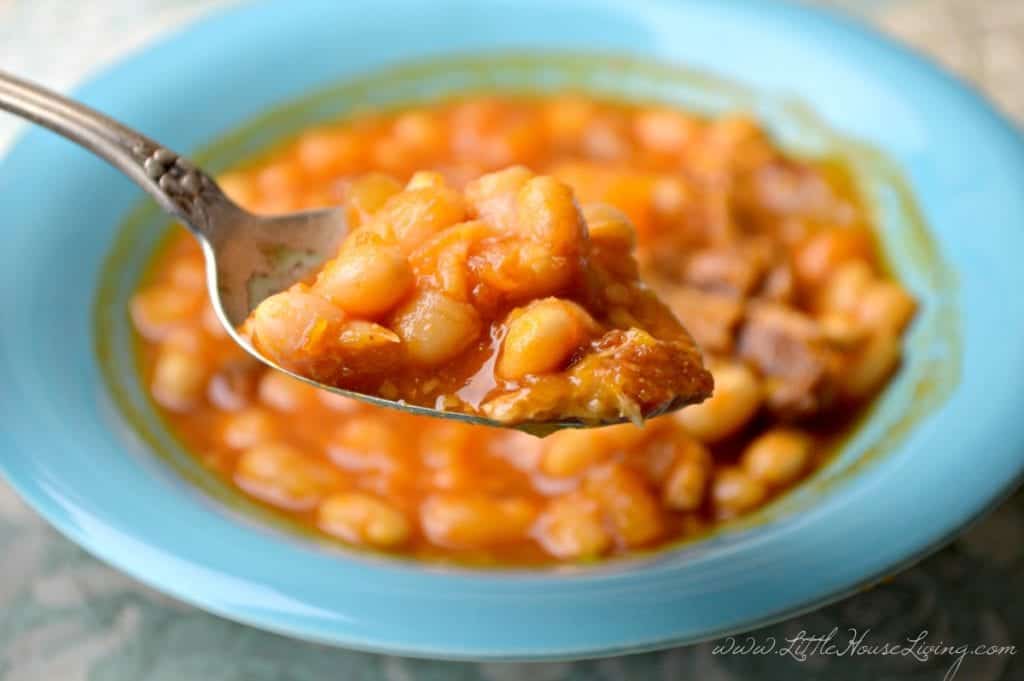
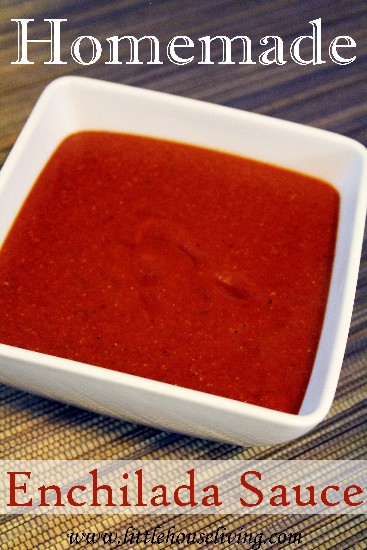
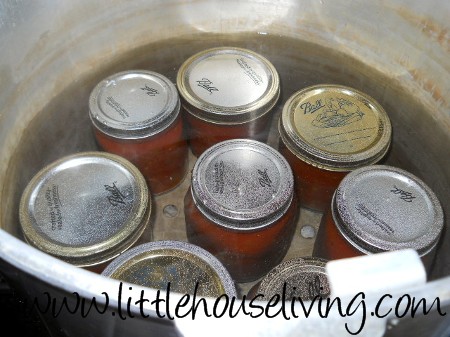

I always throw a can in my Venison chili for an extra tomato punch.
How I store it after I open, I cut both ends of the can. Push it out onto a piece of plastic wrap. Twist up each end and put in a freezer bag. The when I need some is slice off what I need.
Great tip, thanks for sharing!